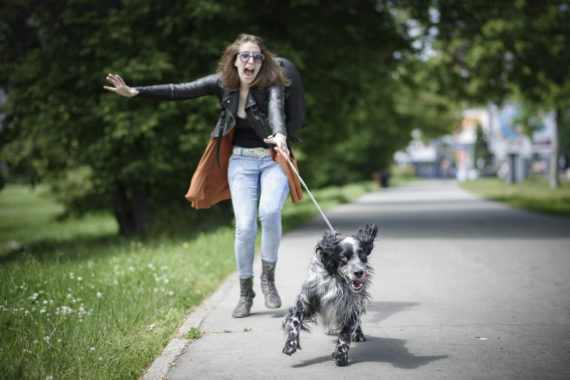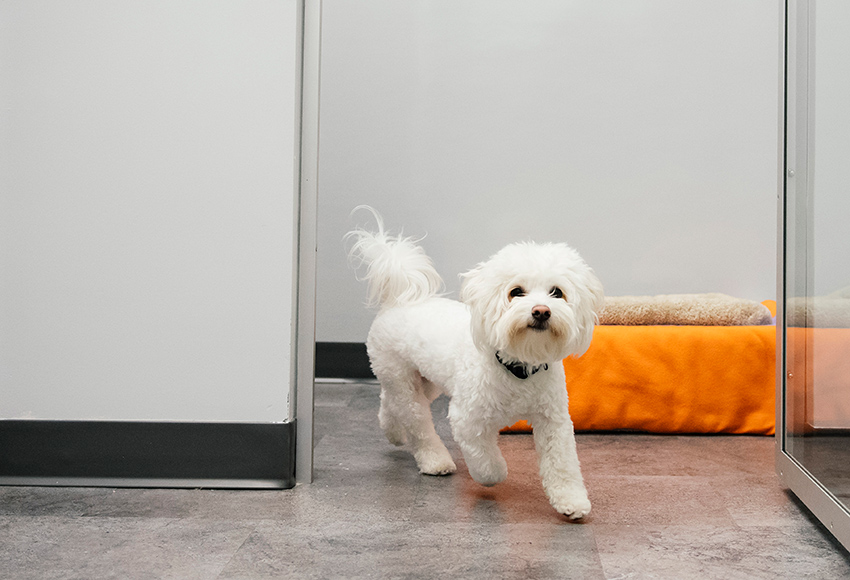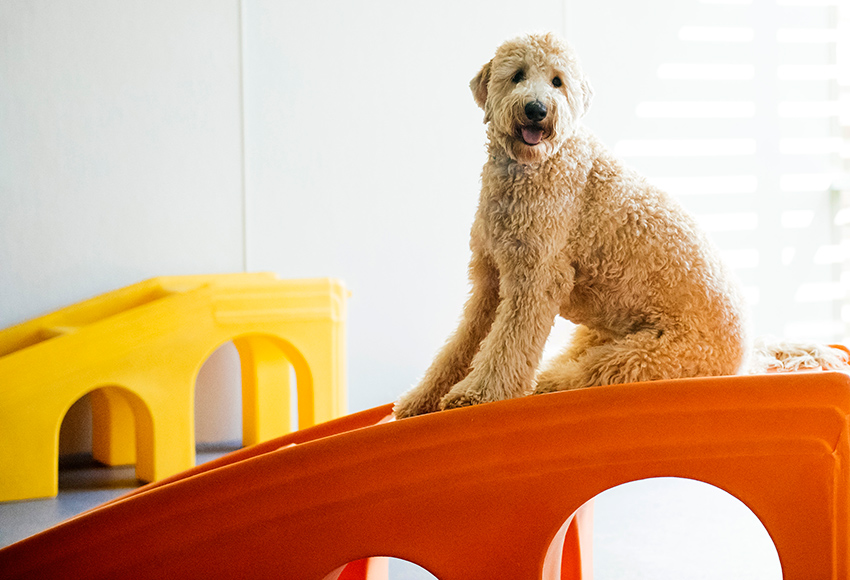3 Ways to Improve Your Dog’s Leash Manners

Does your dog pull relentlessly on the leash? Maybe they bark at everything you pass by or attempt to chase small animals. Don’t worry, we can help you! This entry is all about how to get your dog to be more engaged with you and how to manage nuisance behaviors during walks.
It is important to note that these are training tips. Training is constant work and requires dedication and consistency when working with your dog. Be sure to consult a trainer here at Dogtopia if you continue to have complications with your furry friend on walks! Let’s get started.
Make sure your dog is on the correct walking equipment.
The first and most important step is to ensure that your dog is walking on equipment that they are comfortable and successful on! A lot of times, we want to grab the cutest harness or the most familiar tool so that we can get our dogs walking to our liking. While this plan isn’t wrong, it’s a little more complex if you’re wanting your dog to be more well-mannered during walks. Let’s talk about most common walking tools used by pet parents today:
- Flat collar: Flat collars are good for well-trained dogs that know not to pull on leash. If your dog pulls on leash while walking on a flat collar, the dog could easily slip out of the collar or cause damage to the trachea if the dog is persistent.
- Back clip harness: Back clip harnesses are best used for trained dogs who understand not to pull on leash under any circumstances. If your dog has a habit of pulling on leash, a back clip harness may not be the best choice for walking equipment. These types of harnesses cause something called an opposition reflex where the dog naturally pulls against the pressure on their back causing a sled effect. Afterall, the original intent for a back clip harness was for sled dogs to pull sleds.
- Prong collar: These collars should be used under professional recommendation only and should be a last resort when trying to find proper walking equipment. By no means should this be a first choice when choosing what to walk your dog on.
- Choke collar: This collar is used with the intention of training a dog to stop pulling on leash by associating pulling with an unpleasant feeling. These collars commonly have little affect and generally the dogs will get used to the pressure and will pull through it.
Now that we’ve gone over some of the commonly used walking tools, let’s talk about walking equipment that is more appropriate for decreasing unwanted behaviors during walks.
- Gentle leader headcollar: This training tool is specifically designed to discourage any reactive behaviors during walks such as excessive pulling, lunging, barking, or jumping. This tool gives you more power steering during walks and, best of all, is not meant to be used long term! Since this equipment goes over the nose, the dog will need to acclimate to it by wearing it around freely while doing something they enjoy.
- Front clip harnesses: Some popular front clip harnesses are Easy-Walk Harnesses and 3-in-1 Harnesses. These harnesses work best for dogs that pull excessively on leash by redirecting the dog back toward you and away from what they are pulling toward. Generally, puppies and small dog breeds do best on harnesses, with a few exceptions.
Remember to speak with a professional before choosing your walking equipment to ensure you’re choosing the right fit for your pup!
Bring treats with you on walks!
You won’t need to bring treats with you forever, but it is incredibly important to reward your dog for the work they are doing, especially in the beginning stages of training! We don’t go to work and not get paid, our dogs should receive payment for their hard work too! Now let’s talk about when you should treat your dog. You’ll need to be generous with your treats initially. Get the dog to follow you reliably before worrying about them being in a heel position. Reward the dog as you are walking along and begin to reward as the dog maintains a consistent pace with you. It is also important to reward your pup when they make eye contact with you during walks. This lets them know that you want them to check in with you periodically. And of course, you should reward your dog for any other “good” behavior during walks such as sitting and waiting patiently when you stop or greeting people politely.
Change directions frequently during your walks.
It’s okay to do an unexpected U-turn sometimes. Or to walk in figure eights in the drive way. Maybe even switch to the other side of the road every 50 steps. As silly as it may feel, it serves a purpose! Switching up your direction frequently can most certainly establish leadership within your walks with your pup. They will learn to follow your lead and will know to be checking in for your guidance periodically.
If you continue to have obedience issues or if you have any questions, let us know at [email protected].







